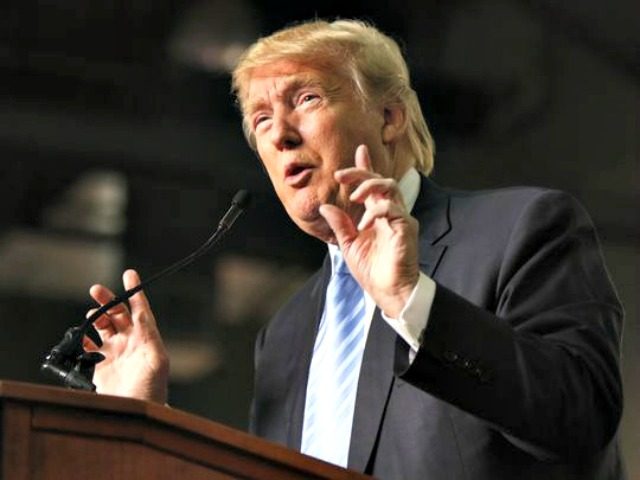In his book The Tipping Point Malcolm Gladwell defined that as “the moment of critical mass, the threshold, the boiling point.”
America is now at a tipping point where about half of the economy — the lethargic, bureaucratic, chaotic, inefficient half — is run by government.
Consider this:
- Taxes collected by all levels of government are already approaching 40 percent of national income.
- There are more than 75,000 pages of fine-print federal regulations, imposed on individuals and businesses, in The Federal Register.
- Dozens of federal agencies and cabinet departments regulate every aspect of industry.
- Hundreds of state and local government agencies regulate, tax, or operate everything from airports to zoos.
When nearly half the economy is either owned or controlled by government, we shouldn’t be shocked by the popularity of an avowedly socialist candidate like Bernie Sanders—or by the fact that Hillary Clinton thinks we need even more government bureaucrats, more regulations, higher taxes, and more “free” stuff (like “free” college paid for by the taxpayers). If the American people want socialism, they are very close to getting it.
Or they could elect Donald Trump, a man whose life has been devoted to creating economic value, jobs, and wealth around the world, and who wants to “make America great again” by bringing more jobs to America and new, business-oriented thinking to Washington.
Some have called Donald Trump’s trade policies “protectionist.” In fact, he is far less “protectionist” than Hillary Clinton.
Trump’s criticisms of the Clinton administration’s “North American Free Trade Agreement” (NAFTA) are spot on. NAFTA is not a “free trade” agreement despite the name; it is several thousand pages of fine-print regulation of trade, written mostly by corporate, union, and environmentalist lobbyists under the supervision of Clinton administration trade representative Mickey Kantor. NAFTA was meant to create a central planning bureaucracy to regulate North American trade, mostly for the benefit of politically connected corporations and unions.
Perversely, NAFTA’s main effect has been to prohibit reductions in tariffs and to support excessive labor and environmental regulations in the name of “regulatory harmony.” It is essentially a price-fixing cartel. By escalating taxation and regulation it has made trade less free.
Trump, by contrast, is against deals that only benefit corporations and unions that are Washington insiders. He wants trade deals that a freer and fairer than those we have now.
Overall, he stands for lower taxes, fewer regulations, and more private sector jobs.
He condemns the Washington, big government consensus—including its global warming alarmism that threatens massive new “green” taxes and job-killing “green” regulations (he calls it “the climate change hoax”).
He opposes socialized medicine and wants to repeal Obamacare.
He opposes the Federal Reserve Board’s boom-and-bust monetary manipulations and wants a return to the gold standard.
He wants to simplify the tax code with a maximum twenty-five percent income tax rate, enact a middle class tax cut, and eliminate the “death tax.”
He wants to slash the business tax rate to fifteen percent—and that means all businesses, including small businesses and independent contractors— so that entrepreneurs can use that money to create new jobs rather than stuff the pockets of bureaucrats in Washington.
Trump thinks like an entrepreneur. He wants a smaller, more efficient government with a dramatically better bottom line for the American people.
Hillary Clinton, on the other hand, is a leftist ideologue who has spent her entire adult life in politics. She thinks government should direct more of your life and more of the economy.
If you want to imagine a second Clinton administration, imagine this:
- an economy that is no longer half socialist, but maybe two-thirds socialist.
- lower living standards (as in all socialist regimes).
- rising poverty and unemployment, as socialism proves yet again that it doesn’t work.
- an avalanche of new federal regulations.
- more restrictions on civil liberties (an inevitable consequence of socialist economic control).
- a very high likelihood of hyperinflation, as socialist regimes often try to inflate their way out of economic trouble.
- war, which is another socialist way to distract an unhappy population.
Some people think it is risky to put the federal government in the hands of a businessman with no political experience. But actually, the far bigger risk is to put the federal government in the hands of a woman with all the wrong political experience and ideas. America has reached a turning point, and Donald Trump could turn us back on the road to prosperity and freedom—a road that Hillary doesn’t even want to take.
Thomas DiLorenzo is professor of economics at Loyola University Maryland and a member of the senior faculty of the Ludwig von Mises Institute. His latest book is The Problem with Socialism (Regnery, July 18, 2016).

COMMENTS
Please let us know if you're having issues with commenting.